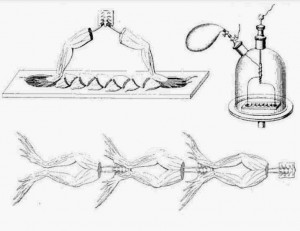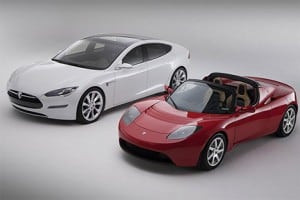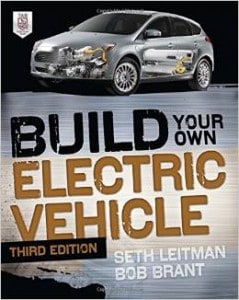To celebrate National Battery Day, take a moment to think how many times a day and in how many different ways you rely on batteries … cell phones, computers and tablets, cameras, hearing aids, car batteries, children’s toys, games, smoke alarms (have you checked that battery recently?), the list goes on. Image what the world would be like if we only had frog batteries on which to rely…

Yup, frog batteries. Carlo Matteucci developed the first well-known frog battery in 1845. A frog battery is an electrochemical battery and the general term of this class of battery is the “muscular pile.” But, long before there were frog batteries, Benjamin Franklin coined the term “battery” to describe an array of charged glass plates. His “Leyden Jars” were the early form of a capacitor. He not only came up with the theories, he had to create a new language to fit them. He coined the terms battery, charge, condenser, positively and negatively among others. These are the same terms that are used today. The rechargeable battery was developed in 1859 by the French inventor, Gaston Plante, and is the battery most commonly used in cars today. However, there is now a push for greener electric cars, and there are nearly 25 electric cars on the market today. Now the race is on to create a SuperBattery – one that can power an electric car for 300 miles. The Tesla Models X and S are the only cars that come close so far. The Supercharger stations in China are among the world’s fastest and can fully recharge a Tesla in 75 minutes.

It is even possible to build your own electric car – building from the ground up or converting an internal combustion engine to electric. According to Seth Leitman, an industry leader in Green-Eco Friendly lifestyles, there are four reasons why EVs will be around a long time: They are fun to drive and own, they are cost efficient, they are performance efficient and they are environmentally efficient. In the latest edition of his book, “Build Your Own Electric Vehicle,” he will take you, step-by-step through building your own electric vehicle. His books, “Build Your Own Electric Vehicle,” and “Build Your Own Plug-in Hybrid Electric Vehicle” are available here in the library. The Leddy Lab in the Department of Chemistry at the University of Iowa is doing research on several areas, one of which is Fuel Cells and Batteries. Fuel Cells are efficient and have environmental advantages which make them attractive power sources for everything from cars to laptops. Researchers at Virginia Tech are working on perfecting a sugar-powered “biobattery.” Recharging may be as simple as adding sugar. And so the development of the battery continues. From the potato batteries used in science classes to molten salt batteries, nickel-zinc batteries, rechargeable alkaline batteries, vacuum tube batteries, the sugar battery and fuel cells. And so the development of the battery continues. From the potato batteries used in science classes to molten salt batteries, nickel-zinc batteries, rechargeable alkaline batteries, vacuum tube batteries, the sugar battery and fuel cells. I’m glad we don’t have to rely on frog batteries….

References:
- Hellman, Hal. 2001. Great Feuds in Medicine: Ten of the Liveliest Disputes Ever. New York : Wiley. Electronic Library Resource.
- Leddy, Johna. University of Iowa Department of Chemistry: Leddy Lab.
- Gibbs, Samuel. 2014, Jan 22. Sugar Battery Offers Hope of Green Powered Gadgets within Three Years. The Guardian: Tech: Research and Development.
- Worrall, Simon. 2015, Feb 15. Ready, Set, Power Up – Can the U.S. Win the Race to Create a Superbattery? National Geographic: News: Book Talk.
- Bellis, Mary. 2015. Battery: History Timeline of the Battery. About.com: About Money.
- Leitman, Seth & Bob Brant. 2013. Build your own electric vehicle. New York : McGraw-Hill Education. Engineering Library TL220 .B68 2013
For more information:
- Plugin Cars. 2015. Recargo, Inc.
- Huang, Kevin & John B. Goodenough. 2009. Solid Oxide Fuel Cell Technology : Principles, Performance and Operations.Cambridge, UK : Woodhead Publishing. Engineering Library TK2931 .H82 2009 h
- Shafiei, N. & M. Ordonez. 2014, July 08. Improving the Regulation Range of EV Battery Chargers with L3C2 Resonant Converters. Power Electronics. IEEE Transactions. Volume 30: Issue 6. Pp. 3166-3184. DOI: 10.1109/TPEL.2014.2336668
- Lichtenberger Engineering Library Patent Searching Guide
